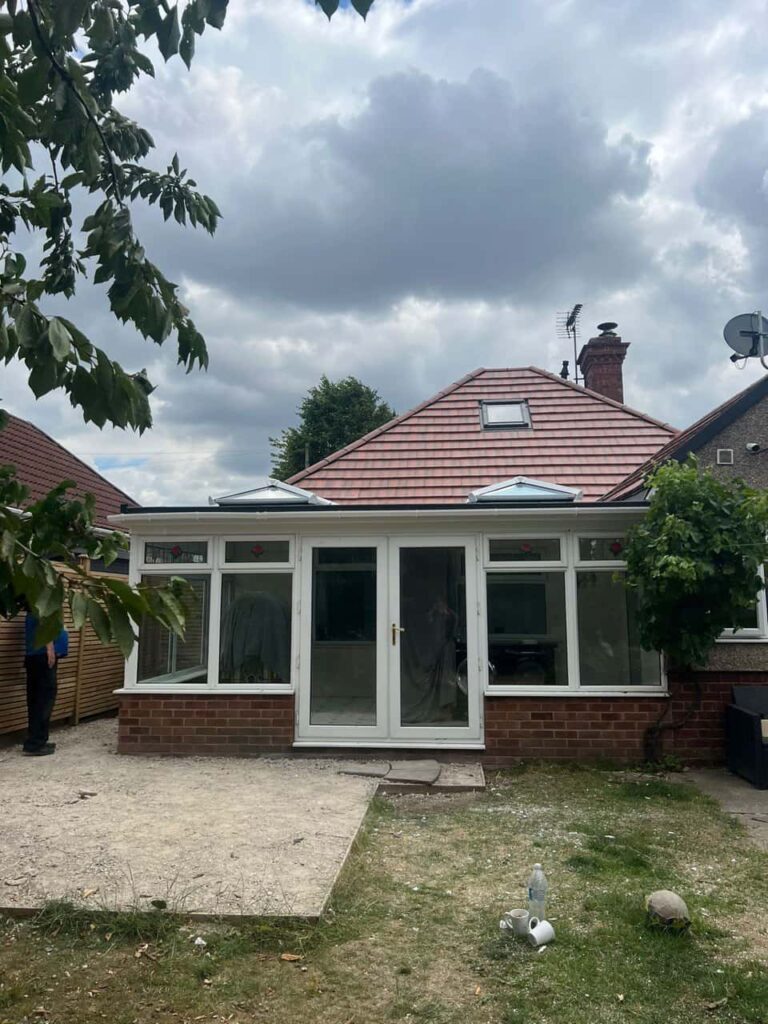Introduction
Proper roof ventilation plays a critical role in maintaining a healthy home environment—yet it’s often overlooked. Poor airflow in your loft or roof space can trap moisture, leading to mould, timber decay, and increased energy costs. Homeowners in Oldbury, West Midlands face a mix of damp winters and warm summers, making roof ventilation even more important.
At Oldbury Roofing Repairs, we frequently assist clients with damp-related issues linked to poor ventilation. Here are eight practical ways to improve roof airflow and keep mould at bay, while also protecting the integrity of your property.
1. Install Soffit Vents
Soffit vents are located under the eaves and allow cool air to enter the loft space.
- Encourages continuous airflow through the roof cavity
- Works best when paired with ridge or gable vents
- Helps regulate temperature and humidity levels
2. Use Ridge Vents
Ridge vents run along the peak of the roof and allow warm, moist air to escape.
- Passive system requiring no electricity
- Distributes ventilation evenly across the entire roof
- Blends well with most roofing designs
3. Add Gable Vents
Gable vents are installed on the exterior walls of the loft and support cross ventilation.
- Improves air circulation from side to side
- Especially useful in older or steeper-pitched roofs
- Can be combined with other vent types for better performance
4. Install Roof Turbines or Ventilators
These spinning vents harness wind power to extract hot air from the loft.
- Cost-effective and energy-free
- Ideal for homes that lack natural airflow
- Quiet operation with minimal maintenance
5. Clear Existing Vents
Vents blocked by dust, insulation, or bird nests won’t perform as they should.
- Check regularly for obstructions
- Clean with soft brushes or gentle air blowers
- Ensure eaves, soffit, and ridge vents are always open
6. Ensure Proper Loft Insulation
While insulation prevents heat loss, poor installation can block airflow and trap moisture.
- Keep a gap between insulation and the roof deck
- Use baffles to maintain air flow paths
- Avoid over-packing insulation into corners and eaves
7. Use Vapour Barriers
A vapour barrier installed beneath loft insulation helps control moisture from inside the home.
- Reduces the risk of condensation forming in the loft
- Protects timber structures and insulation
- Essential in humid areas or bathrooms beneath lofts
8. Schedule a Professional Roof Inspection
A trained roofer can assess your ventilation system and recommend improvements.
- Identifies hidden issues like mould, rot, or blocked airflow
- Tailors ventilation systems to roof design and local climate
- Provides peace of mind and long-term cost savings
Conclusion
Effective roof ventilation is key to avoiding costly issues like mould, damp, and structural damage. With small adjustments—like installing the right vents, ensuring insulation is properly placed, and seeking expert advice—you can significantly extend your roof’s life and improve your home’s indoor air quality.
Oldbury Roofing Repairs offers expert advice and ventilation upgrades for homes across Oldbury, West Midlands. If you’re concerned about roof moisture, condensation, or musty smells, get in touch with our experienced team today for a thorough inspection and tailored solution.
Call us on: 0121 312 1498
Click here to find out more about Oldbury Roofing Repairs
Click here to complete our contact form and see how we can help with your roofing needs.

